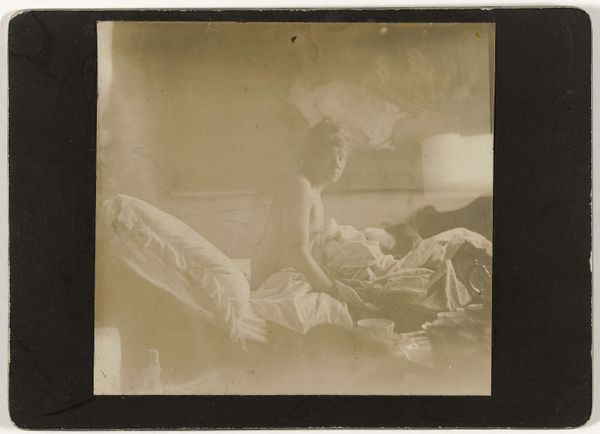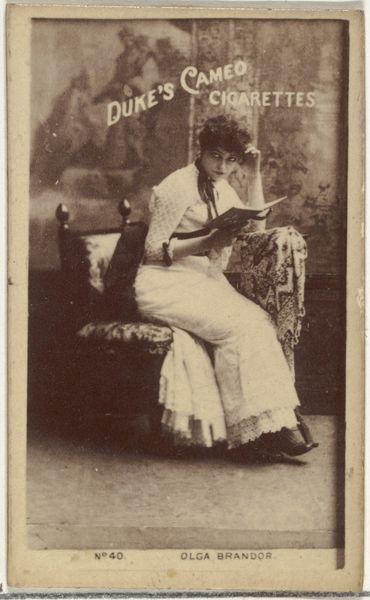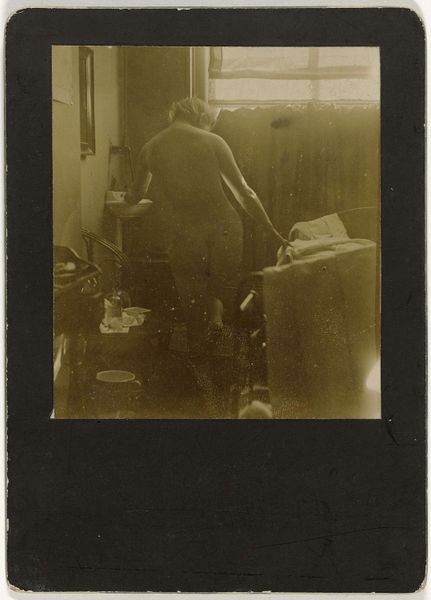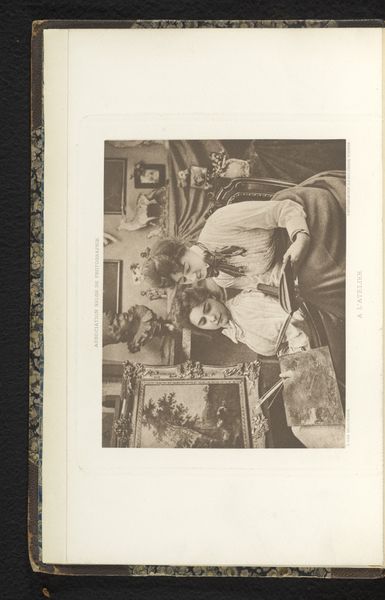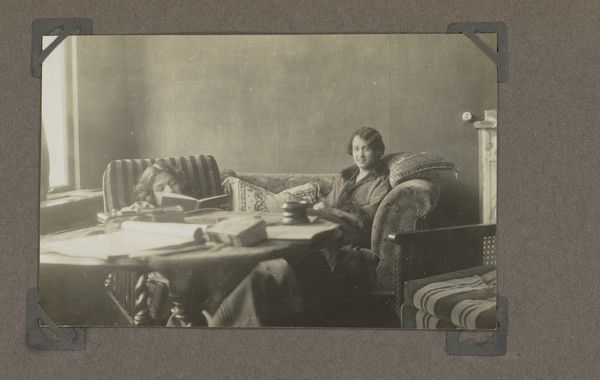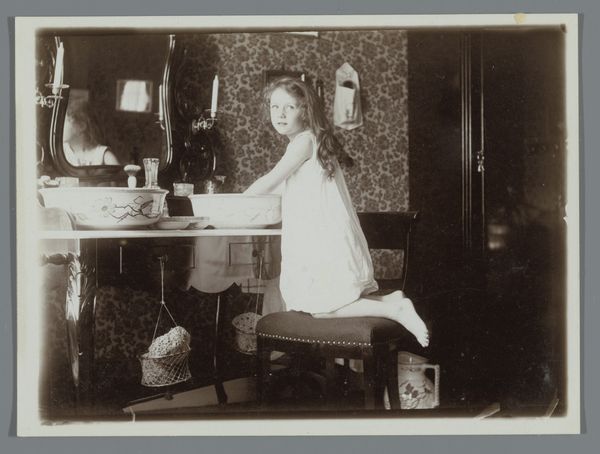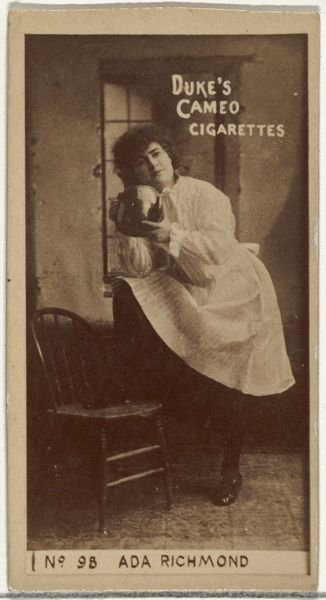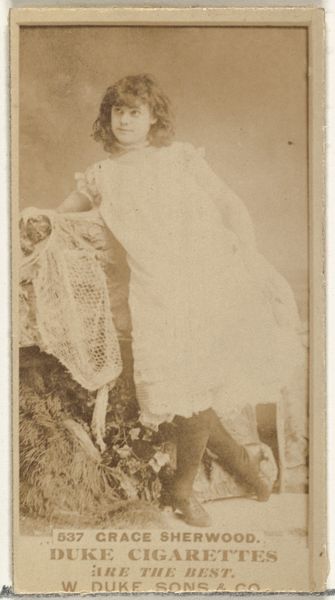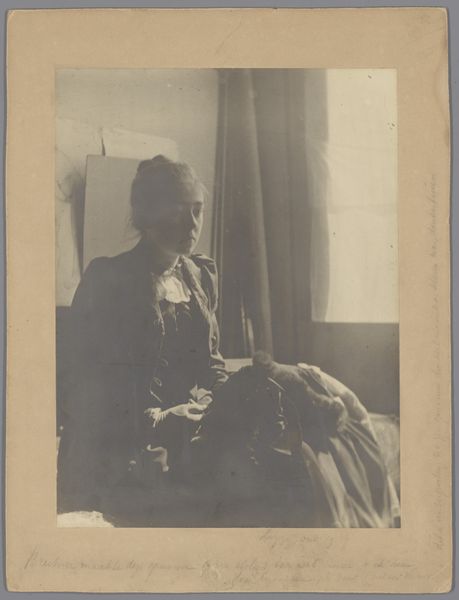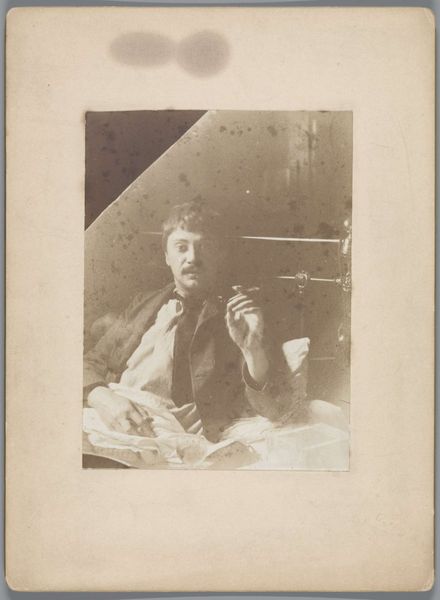
Marie Jordan met hond op bed en een theekop in haar handen c. 1890
0:00
0:00
georgehendrikbreitner
Rijksmuseum
photography
#
portrait
#
impressionism
#
dog
#
photography
#
genre-painting
Dimensions: height 89 mm, width 98 mm, height 103 mm, width 122 mm
Copyright: Rijks Museum: Open Domain
Curator: At first glance, the atmosphere feels quiet and contemplative, a very private, feminine space. It's not entirely clear, though. Is it an embrace of that domesticity or confinement? Editor: This is a photographic image made around 1890 by George Hendrik Breitner, held in the Rijksmuseum. The title is, "Marie Jordan met hond op bed en een theekop in haar handen" – Marie Jordan with dog on bed and a teacup in her hands. It definitely sparks interest because of what’s in and out of focus, blurring those expectations. What processes informed that, and why? Curator: It's certainly evocative, that interplay of light and shadow. And the fact that it's a genre scene elevates the ordinary rituals of the time, focusing on womanhood as a societal construct, like an early version of Cindy Sherman. The teacup isn't just a teacup; it symbolizes leisure, domesticity, the roles imposed on women. Editor: I am curious, though, what camera equipment and techniques would have allowed such effects? The tones achieved show a mastery of materials, light, and printing—I’d want to explore Breitner’s choices and labor, from conception to material result, to give a clearer picture of its initial reception and its lasting social impact. Was this considered progressive at the time? Who were its intended audience? Curator: The dog feels essential here as a signifier of companionship and emotional support. The positioning mirrors Marie Jordan, adding emotional resonance to this tableau of intimacy. Maybe even loyalty in a rapidly modernizing era—something fixed amid the change? Editor: Agreed. It seems straightforward as a depiction of domesticity, but I’d need to look at the paper type used for printing, to check archives for related documents or studio receipts – to understand how images of leisure circulated and solidified class identity at the time. And consider the legacy. It is about that individual sitter or a generalized "type"? Curator: To me, that duality is what makes this image fascinating. We're invited into this intimate setting, but the specific circumstances of it—remain vague, universalized through shared, gendered symbolism. Editor: Agreed; uncovering those production contexts would reveal an image much richer and tangled than a quick view would suggest!
Comments
No comments
Be the first to comment and join the conversation on the ultimate creative platform.
